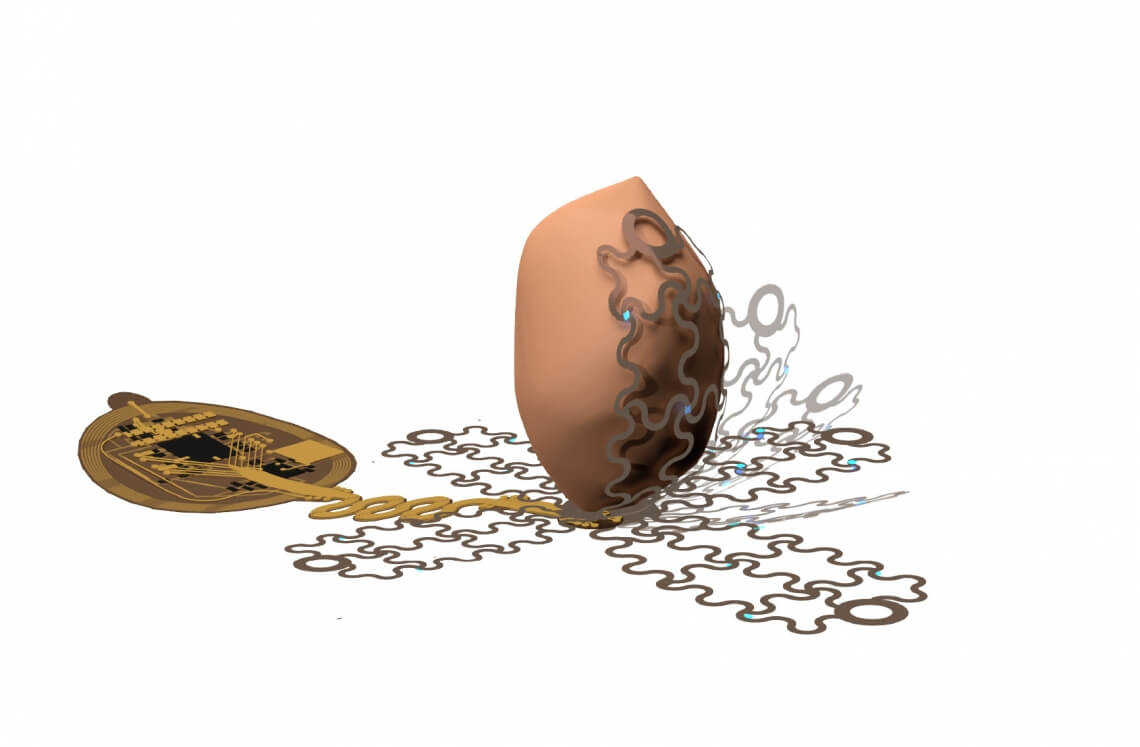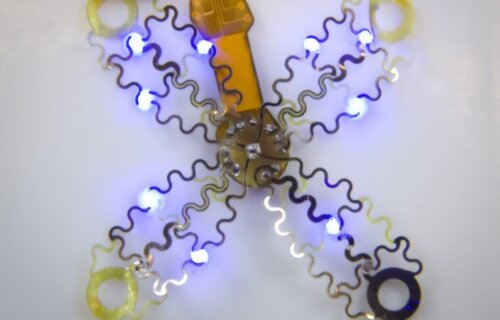TUCSON, Ariz. — An innovative pacemaker with the potential to transform the lives of individuals with heart disease has been developed by a team of engineers at the University of Arizona. Unlike traditional pacemakers, this new device is wireless, battery-free, and uses light-based technology to regulate heartbeats, offering a less invasive and pain-free treatment option.
The researchers’ findings, published in the journal Science Advances, provide hope for millions of people worldwide suffering from conditions such as atrial fibrillation, a common form of irregular heartbeat.
Atrial fibrillation, or AFib, affects a significant number of individuals, leading to numerous hospitalizations and fatalities each year. Pacemakers have long been a crucial tool in managing heart diseases by providing electrical stimulation to regulate the heart’s rhythm. However, the implantation of pacemakers has traditionally been an invasive procedure associated with pain and discomfort for patients. Moreover, existing pacemakers are limited in their ability to treat certain types of heart conditions.
The University of Arizona’s research team, led by Dr. Philipp Gutruf, aims to revolutionize the field of cardiology by introducing a wireless and battery-free pacemaker that significantly reduces patient discomfort. The key innovation lies in the precise targeting capabilities of the new device, which bypasses pain receptors within the heart. By using light-based technology and a technique called optogenetics, the pacemaker delivers targeted signals to specific cells within the heart, known as cardiomyocytes. This precision targeting not only minimizes pain for patients but also allows the pacemaker to respond more effectively to different irregularities in heart rhythm.
“Current pacemakers record basically a simple threshold, and they will tell you, ‘This is going into arrhythmia, now shock!'” Gutruf says in a university release. “But this device has a computer on board where you can input different algorithms that allow you to pace in a more sophisticated way. It’s made for research.”
The researchers have developed a digitally manufactured mesh design that envelops the entire heart. Unlike traditional pacemakers that use leads implanted into the heart, this new pacemaker utilizes a mesh structure that distributes light signals throughout the heart, ensuring a more accurate and targeted treatment approach. The mesh consists of four flexible petal-like structures made of thin film, which accommodate the heart’s changing shape as it beats. When implanted, these petals fold around the heart, similar to a flower closing at night.

The advanced technology of this pacemaker enables the recording of vital information without interference. Unlike conventional pacemakers that can be disrupted during the defibrillation process, the light-based pacemaker continues to record data, providing physicians with a comprehensive picture of the patient’s heart health. Furthermore, the absence of a battery eliminates the need for frequent replacements, alleviating a significant burden for pacemaker recipients.
“Whereas right now, we have to shock the whole heart to do this, these new devices can do much more precise targeting, making defibrillation both more effective and less painful,” says Igor Efimov, professor of biomedical engineering and medicine at Northwestern University, where the devices were lab-tested. “This technology could make life easier for patients all over the world, while also helping scientists and physicians learn more about how to monitor and treat the disease.”
While the current version of the pacemaker has been successfully tested in animal models, further research and development are necessary before it can be used in humans. The potential of this groundbreaking technology to improve the quality of life for millions of individuals worldwide cannot be understated. Its pain-free and non-invasive nature opens up a world of new possibilities for managing various heart conditions effectively.

Very confusing. There is a major difference between a standard pacemaker and a defibrillating pacemaker such as you are describing here. Regular pacemakers are not painful at all. Your articles on health and science are a mess. This one might frighten people who require a regular pacemaker for their health.
wow as a person that has lived with a pacemaker for years – – – 6 or more and still have 4.5 years of battery life – – – – what is the issue of battery replacement – – – –
and as for recording and monitoring – – – – oh it is way beyond anything this article suggests – – my pacemaker records and stores heart information for months – – can be played back at the doctors office – – – or transmitted by a base station on my dresser as desired- – all by wifi means – – –
this article is so off based – – – record with no battery – – where does the light come from – – – I have no external connections – – –